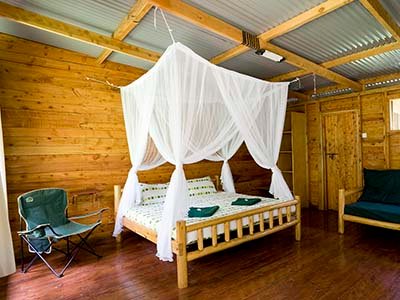Lalibela Rock-hewn Churches
Lalibela rock-hewn churches, located in the northern town of Lalibela, are a testament to Ethiopia’s remarkable architectural and religious heritage. These 13 churches were intricately carved from a single block of rock during the 12th century reign of King Lalibela. The churches are not only a magnificent feat of engineering but also hold deep significance in Ethiopian Orthodox Christianity, making them a popular pilgrimage site for believers from around the world. Each of the churches has its own unique story and architectural style, showcasing the rich cultural history of the region.
The churches, known as “Biete” or “Bete” or “Bet” in the local language, are supposed to be copies of Jerusalem, with each one symbolising a different holy location.

Now they stand as a testament to the cultural wealth of the country and are protected as a UNESCO World Heritage Site. These churches are among the oldest and most significant religious sites in the country, and the Ethiopian Orthodox Church has played a pivotal role in their maintenance and preservation.
Many Christians travel to Lalibela specifically to worship at these temples. The cathedrals’ miraculous construction has garnered them praise for centuries, and legend has it that angels erected them in a single night.
Biete Alem, in the heart of Lalibela, is the largest and most spectacular of these churches and also the holiest. The craftsmanship on display in its ornate carvings and frescoes is claimed to be a representation of Golgotha, the place where Jesus was crucified. Bete Medhane Alem, sculpted in the shape of the Temple of Solomon in Jerusalem, and Bete Giyorgis, carved in the shape of the River Jordan, are two more noteworthy churches.
These holy buildings not only serve as reminders of Ethiopia’s history but also as vital components of modern Ethiopian religion and culture. Although the Zagwe dynasty that ruled Ethiopia during the time these churches were built is no longer in power, their legacy endures in the form of Lalibela’s impressive rock-hewn churches.
These cathedrals, with their beautiful architecture and ornate carvings, provide a window into the past and serve as a source of motivation for the present and the future.
History of Lalibela Rock-hewn Churches
The village of Lalibela, in northern Ethiopia, is famous worldwide for the magnificent rock-hewn cathedrals that can be seen there. The 12th-century Ethiopian king Lalibela inspired the monument’s eponymous name. It is said that angels appeared to Lalibela in a dream and told him to construct a “New Jerusalem” in Ethiopia. This was supposedly done in retaliation for the Muslim conquest of Ethiopia, which resulted in the destruction of the country’s former capital. Because of this revelation, King Lalibela began building a string of massive churches.
The Zagwe dynasty, which governed Ethiopia during the 10th and 13th centuries, was the one to which King Lalibela belonged. In particular, the Zagwe dynasty was renowned for its accomplishments in the arts of sculpture and architecture. One of the crowning achievements of the Zagwe dynasty is regarded as being the rock-hewn cathedrals of Lalibela. The churches were built during this time, and many of the buildings were cut out of solid rock. The rock-hewn churches of Lalibela were built in a magnificent display of design and engineering.
The churches were built by slicing into the mountainside’s solid rock. It’s still unclear how the churches were built, but it’s generally accepted that the elaborate carvings and motifs that adorn their walls and ceilings were made using a combination of chisels, hammers, and other instruments. The churches feature intricate façades and ornamental decorations, and several of them were hewn out of solid rock from top to bottom.
One of Ethiopia’s most significant religious sites is the rock-hewn churches of Lalibela. They are a well-liked destination for pilgrims from all over the world and are a part of the Ethiopian Orthodox Tewahedo Church. The churches, which represent the deeply held religious beliefs and customs of the Ethiopian people, are said to have been constructed during a time of religious renewal in Ethiopia. With some churches honouring the Holy Trinity and others honouring particular saints, each church has its own distinctive personality and meaning. The buildings serve as a significant representation of Ethiopian Christianity and as evidence of the Zagwe dynasty’s creative and architectural prowess.
The 13 Lalibela Rock-hewn Churches
The Rock-hewn Churches of Lalibela are a true wonder of the world. Carved from solid rock, they are an incredible example of ancient engineering and craftsmanship. Lalibela is home to 13 churches, each with its own unique story and significance. Here is a brief overview of the churches:
- Biete Medhani Alem: This is the largest church in Lalibela and is an impressive sight to behold. Its name means “Savior of the World,” and it is believed to have been built by King Lalibela himself.
- Biete Maryam: This church is dedicated to the Virgin Mary and is said to have been built on the site where King Lalibela was born. It has a unique cross-shaped design and is adorned with beautiful carvings.
- Biete Maskal: Also known as the “House of the Cross,” this church is home to a beautiful mural depicting the story of the finding of the True Cross.
- Biete Denagel: This church is dedicated to Saint George and is said to have been built in honor of the saint’s victory over a dragon.
- Biete Golgotha Mikael: This is the holiest church in Lalibela and is said to house the tomb of King Lalibela himself. It is located in a cave and can only be accessed by crawling through a small tunnel.
- Biete Gabriel-Rufael: This church is named after the two archangels, Gabriel and Raphael. It has a unique design, with four pillars supporting a dome-shaped roof.
- Biete Lehem: This church is dedicated to the birth of Christ and has a beautiful mural depicting the Nativity scene.
- Biete Amanuel: This church is dedicated to the Holy Trinity and is said to have been built in the 12th century. It has beautiful carvings and a unique design, with three entrances symbolizing the Holy Trinity.
- Biete Qeddus Mercoreus: This church is dedicated to Saint Mercoreus and is said to have been built in the 13th century. It has a beautiful courtyard and a unique design, with a circular interior.
- Biete Abba Libanos: This church is dedicated to Saint Libanos and is said to have been built in the 12th century. It has a unique design, with a cross-shaped interior and beautiful carvings.

Bet Abba Libanos Lalibela Rock-hewn church, Ethiopia by Jenn - Biete Giyorgis: This church is dedicated to Saint George and is perhaps the most famous of all the churches in Lalibela. It has a unique, monolithic design, with a cross-shaped exterior and an impressive interior.
- Biete Emanuel: This church is dedicated to the Archangel Michael and is said to have been built in the 13th century. It has a unique design, with a circular interior and beautiful carvings.
- Biete Asfa-worq: This church is dedicated to the Four Evangelists and is said to have been built in the 13th century. It has a unique design, with a circular interior and beautiful carvings.
The monolithic and semi-monolithic churches are a true testament to the engineering feats of the time. The churches were hewn from solid rock, and the intricate carvings and details are still visible today. The churches were constructed using a combination of chisels, hammers, and other hand tools. The techniques used to construct these churches are still not fully understood, and they continue to be a source of fascination for scholars and visitors alike.
These churches are a testament to the engineering feats of the ancient world and continue to be a source of fascination for visitors from all over the world.
Exploring the Lalibela Rock-hewn Churches
Access and Ticket Information The Rock-hewn Churches of Lalibela are a must-see attraction for anyone visiting Ethiopia. The churches are located in the heart of Lalibela town, which can be reached by car from the airport or by bus from the nearby cities. To enter the complex of churches, you need to purchase a ticket at the entrance gate. The ticket costs $50 for foreigners and 600 Ethiopian birr for Ethiopian nationals.
Recommended Itinerary for Exploring the Churches
The churches are divided into three groups based on their location: Northern, Eastern, and Western. Each group can be explored in one day, but it is recommended to spend at least two days to fully appreciate the beauty and history of each church. We suggest starting with the Northern group, which includes the iconic Biete Medhani Alem church, the largest monolithic church in the world. Then, visit the Eastern group, which houses five churches, including the stunning Biete Golgotha Mikael church, the holiest church of Lalibela. Finally, visit the Western group, which includes four churches, including the beautiful Biete Amanuel church.
Dos and Don’ts When Visiting the Churches
When visiting the churches, it is important to respect the religious significance of the site. Dress modestly and remove your shoes before entering the churches. Photography is allowed, but flash photography is prohibited inside the churches. It is also recommended to hire a local guide who can provide in-depth knowledge about the history and architecture of each church. Additionally, visitors are advised not to touch the ancient paintings and carvings on the walls, as they are fragile and irreplaceable. Finally, it is important to remember that the churches are still active places of worship, so please be quiet and respectful when inside.
What are the Lalibela rock-hewn churches, and why are they so important?
The 11 monolithic and semi-monolithic churches known as the rock-hewn churches of Lalibela were hewn out of solid rock in the Ethiopian town of Lalibela. These churches are noteworthy for their distinctive architecture, significance for religion and culture, and historical value. They have been recognised as a UNESCO World Heritage Site and are regarded as one of the most outstanding examples of rock-cut architecture in the entire world.
What was King Lalibela’s identity, and how did he contribute to the development of these churches?
The rock-hewn churches of Lalibela are said to have been ordered built by the Ethiopian king King Lalibela in the 12th century. According to legend, he was given the assignment to construct the churches by God in a dream and carried it out as a representation of his steadfast adherence to Christianity. During his reign, the churches were finished and used by Ethiopian Orthodox Christians as places of worship.
What materials and methods were employed in the construction of the churches?
Lalibela’s rock-hewn churches were hewn out of solid rock using simple tools like hammers and chisels. The building process is thought to have lasted for several decades, with teams of workers focusing on various churches at once. In order to prevent flooding during the rainy season, drainage ditches and underground tunnels were built to connect the churches.
What purpose does Lalibela serve as a destination for Ethiopian Orthodox Christians?
For Ethiopian Orthodox Christians, Lalibela is regarded as the holiest city in Ethiopia and a significant place of pilgrimage. The rock-hewn churches of Lalibela are still used as places of worship today, and it is thought that they were constructed as a testament to King Lalibela’s devotion to Christianity. While pilgrims travel to Lalibela all year long, Ethiopian Christmas and Ethiopian Epiphany are when the most significant religious celebrations occur.
How long has Lalibela been around and what is its history?
Lalibela, then known as Roha, was established by King Lalibela in the 12th century. Under his rule, it developed into a significant centre for religion, and the rock-hewn churches were constructed over a long period of time. Throughout history, Lalibela has been a significant place of worship for Ethiopian Orthodox Christians and has drawn numerous explorers and missionaries from Europe. It has received the UNESCO World Heritage Site designation and is a well-liked tourist destination today.
What distinguishing qualities and draws the 11 rock-cut churches of Lalibela?
The 11 rock-cut churches of Lalibela are notable for their distinctive architecture, intricate frescoes, and historical and religious significance. The churches are joined by drainage ditches and tunnels that were cut out of solid rock. With carvings and frescoes depicting scenes from the Bible and Ethiopian Orthodox Christian tradition, each church has a distinctive architectural design.
What is the significance of the elaborate carvings and frescoes that adorn the churches’ walls?
The churches’ ornate carvings and frescoes depict scenes from the Bible and Ethiopian Orthodox Christian tradition. They are regarded as a type of religious art because they are created to serve as visual representations of Christian teachings and stories.
How are the churches protected from flooding by the drainage ditches and underground tunnel system in Lalibela?
The underground tunnel network and drainage ditches at Lalibela serve to prevent flooding during the rainy season and safeguard the churches. These features were cleverly created to ensure the churches’ longevity and have been essential to their preservation throughout the ages.
How do pilgrims connect with their faith while in Lalibela and what is their experience like?
Many pilgrims travel great distances to visit the holy sites, where they have profound spiritual encounters. Visitors can anticipate seeing devoted believers participating in religious rituals like mass and chanting, which heightens the town’s spiritual atmosphere.
What effects has Lalibela’s designation as a UNESCO World Heritage Site had on the city and its citizens?
The designation has aided in promoting the region as a spiritual and cultural hotspot, drawing tourists from all over the world. As a result, tourism now provides a significant portion of locals’ income, spurring the area’s economic growth and development. Additionally, the designation as a World Heritage Site has raised awareness of how crucial it is to protect Lalibela’s historical and cultural landmarks for present and future generations.




